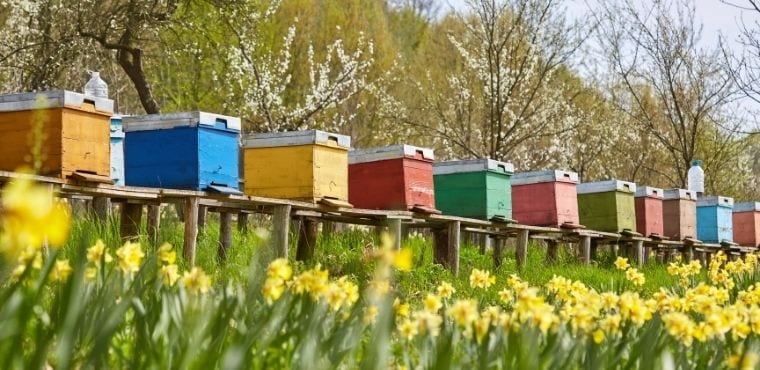Prime beekeeping season runs from spring until fall, but the work of a beekeeper is never done. Even before spring arrives and your bees poke their little heads out of the hive, there will be plenty of tasks on your beekeeping to-do list. If you want your honeybees to have a great spring—and a bountiful honey harvest later in the year—you need to make sure your hives are ready to go. Prepare your equipment, make the trek out to your apiary, and set yourself up for success with these essential steps to prepare your hives for spring.
Pay Attention to the Weather
A lot of your bees’ behavior and success relies on the environment around them. Make sure you know what to expect this year. Are you going to have a long winter, keeping your bees inside their hives for a few more weeks? Will there be a dry start to spring, making flowers scarce during those first few warm days? Keep tabs on the radar and predictions so that you know how to best provide for your hives. If cold temperatures are keeping your bees inside for a while, make sure you supplement the colony with a homemade candy board and other solid food substitutes. Other supplementary feeds such as sugar syrup and pollen patties are great ways to boost a weak hive during those initial weeks of spring growth.
Check for Mites and Other Pests
Varroa mites are major threats to honeybees. Their peak season is in the fall, but you should get a head start on treatment and prevention by inspecting your hives early. Once a warm day comes along and you can take a peek inside the hive, be on the lookout for signs of mites and other predators. This is one of the most essential steps to preparing your hive for spring. Many critters like to take refuge in a warm, food-filled beehive throughout the winter. A strong colony will be able to get rid of most threats on its own, but you can still help your bees by handling these issues early. This will allow your bees to focus on building up brood, comb, and honey when spring arrives.
Pay Attention to the Queen and Her Brood
When you inspect your beehive, look for the queen and her brood—two major indicators of success or failure within the quality. If your brood pattern is spotty and inconsistent, it’s usually a sign of an unproductive queen. A lot can happen during the winter when you’re not able to monitor your bees as closely. You might open the hive in the spring and find there’s no longer a queen at all. Be prepared to handle any issues with the queen and brood as quickly as possible. If you act fast, you can requeen the hive and help your bees get back on track before any irreparable problems occur.






